14.5.2
1. 2024 Longchen Paper & Packaging Co., Ltd. and National Taiwan Ocean University Joint Project Results Presentation Conference
2024財團法人榮成永續發展環保基金會與國立臺灣海洋大學合作計畫成果發表會
Since 2019, National Taiwan Ocean University and Longchen Paper & Packaging Co., Ltd. have jointly launched a collaboration project on Marine Environmental Protection and Sustainable Development. Each year, Longchen Paper & Packaging Co., Ltd. has provided over NT$2 million in funding to support the implementation of related programs at our university. In 2024, marking the fifth anniversary of this partnership, a Results Presentation Conference was held at our university to showcase and promote the achievements of the collaboration. The event was attended by approximately 80 participants, who listened to the project outcomes. To date, 29 students have taken part in the program, deeply embedding the concept of sustainable development in their minds and actions.
Sustainable Impact:Since 2019, the university has partnered with the Rongcheng Foundation for Sustainable Development to implement projects on "Marine Environmental Protection and Sustainable Development," with over NT$2 million in annual funding. Over five years, this collaboration exemplifies SDG 17.2.5 through a long-term public–private partnership advancing marine sustainability. The initiative integrates marine ecosystem protection (SDGs 14.2.2, 14.2.3), ocean research and education (14.3.1, 14.3.3), sustainable fisheries management (14.4.2, 14.4.3), and conservation area promotion (14.5.2), while also fostering climate awareness (13.3.5). The 2024 results symposium showcased achievements to around 80 attendees and engaged 29 students in hands-on projects, embedding sustainability values and demonstrating the power of academia–foundation collaboration in advancing marine conservation and climate education.
本校與財團法人榮成永續發展環保基金會自2019起開展「海洋環境保護及永續發展」合作案,由榮成永續發展環保基金會每年提供超過200萬元經費供本校執行相關計畫。2024年雙方合作滿5年,故決定於本校舉辦成果發表會,推廣合作成果。 發表會當日共有約80人出席聆聽計畫成果,本合作更已有29位學生參與計畫,將永續發展的觀念深植於心。
永續影響力:本校自2019年與榮成永續發展環保基金會合作推動「海洋環境保護及永續發展」計畫,每年投入逾200萬元資源,持續五年推展海洋教育與保育行動,展現公私協力落實SDG 17.2.5「建立長期夥伴關係」。計畫內容涵蓋海洋生態保育(14.2.2、14.2.3)、海洋研究與教育推廣(14.3.1、14.3.3)、漁業與資源永續利用(14.4.2、14.4.3)、以及海域保護區推動(14.5.2),並融入氣候行動教育(13.3.5)。成果發表會除促進知識分享,也吸引29位學生參與,深化永續素養與行動實踐,展現學界與基金會共同推動海洋永續的成效。
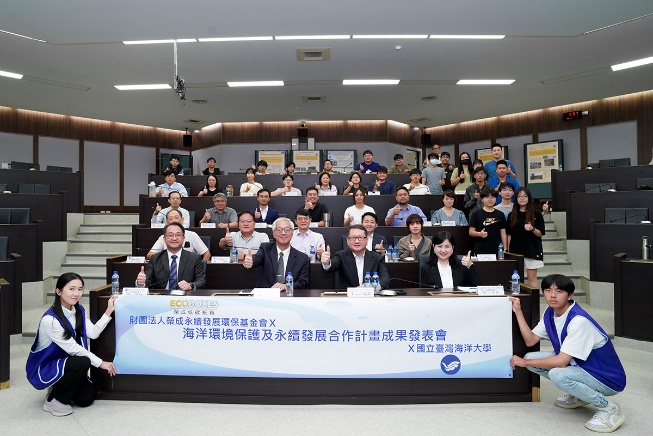
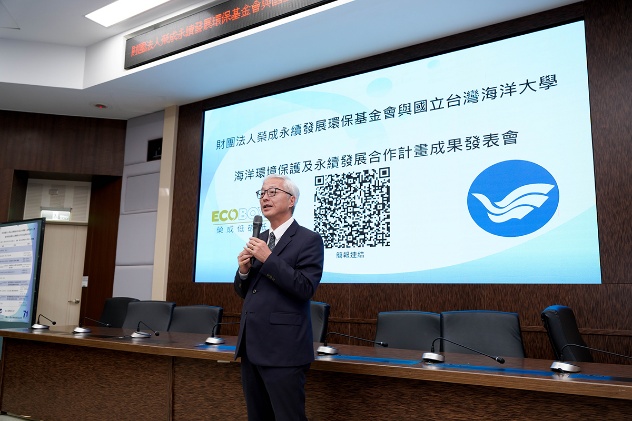
Evidence:
https://research.ntou.edu.tw/p/412-1021-12463.php?Lang=zh-tw
2. Ocean Center Strengthens Collaboration with the University of Tokyo's AORI on Sustainable Ocean Research
海洋中心促進與標竿單位日本東京大學大氣海洋研究所(AORI)合作
Since 2018, the Center of Excellence for the Oceans (CEO), National Taiwan Ocean University, has initiated collaborative exchanges with the Atmosphere and Ocean Research Institute (AORI), the University of Tokyo. Over the years, both parties have gradually built a strong partnership through various forms of academic interaction, including bilateral symposia, reciprocal visits and academic discussions, joint research projects (such as cooperative investigations on the Kuroshio Current), exchange of researchers, faculty, and students, and sharing of research resources, encompassing sampling, specimens, research techniques, data, and facilities (including research vessels). These diverse activities have laid a solid foundation for long-term academic collaboration. Between 2018 and 2023, the two institutions co-authored 15 peer-reviewed journal articles, followed by four additional joint publications in 2024. To further strengthen cooperation and expand research themes, CEO and AORI have engaged in in-depth discussions on key research areas, including hydrothermal vent ecosystems and microplastic pollution in the Kuroshio region. In June 2024, the two institutions officially signed a Memorandum of Understanding (MOU) and an Implementing Agreement, marking the formal establishment of a long-term and institutionalized framework for collaboration. Furthermore, from February 27 to March 26 and July 3 to August 2, 2024, Professor Emeritus Shuhei Nishida from the University of Tokyo was invited to the Center to conduct taxonomic studies on copepods in Taiwan, including the analysis of zooplankton samples and assistance in identifying and describing new species. To date, both institutions have jointly established six substantive collaborative research projects, demonstrating a robust and promising partnership for future international cooperation.
Sustainable Impact:Since 2018, the Center of Ocean Research, National Taiwan Ocean University, and the Atmosphere and Ocean Research Institute (AORI), The University of Tokyo, have maintained a long-term academic partnership involving joint field surveys, symposiums, researcher exchanges, and shared research resources such as vessels and laboratory facilities.Between 2018 and 2024, both institutions co-published 19 academic papers and, in June 2024, formally signed a Memorandum of Understanding (MOU) and Implementing Agreement, institutionalizing their collaboration.Recent joint projects include studies on hydrothermal vent ecosystems and microplastic pollution in the Kuroshio region, demonstrating a strong and sustainable international collaboration network.This partnership strengthens global scientific cooperation and contributes to marine ecosystem conservation and sustainable research capacity, aligning with SDG 17.2.3 (international research partnerships) and SDG 14.5.2 (cross-border marine conservation collaboration).
海洋中心與日本東京大學大氣海洋研究所(Atmosphere and Ocean Research Institute, AORI) 自 2018 年 起即展開合作交流,雙方透過多項學術互動逐步建立夥伴關係,內容包括 舉辦雙邊研討會、互訪與討論交流、共同執行研究計畫(如黑潮聯合研究調查)、研究人員與師生交換,以及 共享研究資源,涵蓋採樣、樣品、研究技術、研究資訊及研究儀器設施設備(含研究船等)。這些多元的合作模式奠定了雙方長期而穩固的學術基礎。 在持續合作的過程中,雙方自 2018 年至 2023 年 已共同發表 15 篇學術期刊論文,並於 2024 年 再發表 4 篇共同著作。為鞏固合作成果並擴展研究範疇,海洋中心與 AORI 針對 熱泉生態系研究 及 黑潮區域塑膠微粒污染 等主題進行深入討論,並於 2024 年 6 月 正式簽署 學術交流合作備忘錄(Memorandum of Understanding, MOU) 及 執行協議(Implementing Agreement),使雙方合作進入制度化與長期推動的新階段。 此外,於 2024年 2 月 27 日至 3 月 26 日 及 7 月 3 日至 8 月 2 日,海洋中心邀請 日本東京大學名譽教授西田周平(Dr. Shuhei Nishida) 來臺,進行 臺灣橈足類分類研究,協助分析浮游動物樣本並支援新種鑑定與描述工作。目前,雙方已建立 6 個可共同執行的實質研究合作項目,展現穩固且深具發展潛力的國際合作關係。
永續影響力:本案由國立臺灣海洋大學海洋中心與日本東京大學大氣海洋研究所(AORI)自2018年起展開長期合作,內容涵蓋黑潮聯合研究調查、熱泉生態系研究、塑膠微粒污染分析等領域。雙方透過研討會、研究人員與學生交流、共同發表論文及共享研究設施等方式,逐步建立制度化合作機制。截至2024年,雙方已共同發表19篇學術期刊論文,並於同年簽署《學術交流合作備忘錄》(MOU)與《執行協議》,確立長期穩定的國際合作架構。此舉不僅促進跨國科研資源共享與技術交流,也為臺灣海洋研究在國際舞台上奠定關鍵地位。本案展現以國際合作促進海洋科學研究、資源保育與永續利用的具體行動,實踐 SDG 14.5.2 及 SDG 17.2.3 所強調的跨國夥伴關係與科研共創精神。
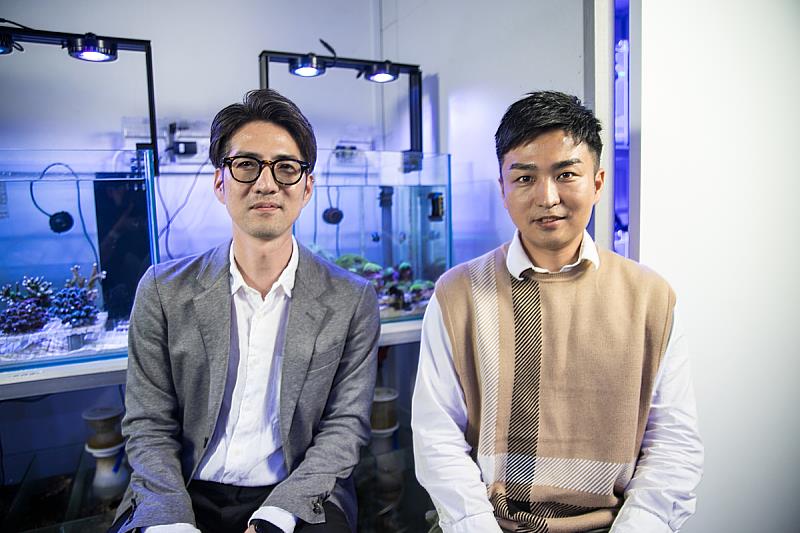

Evidence:
https://www.cna.com.tw/postwrite/chi/377585
3. 2025 Ocean Action Symposium
海洋素養與適能
What is your vision of "ocean literacy"? Ocean literacy is more than just textbook knowledge; it's a way of looking at the world—it influences our values and shapes our motivation to act. Have you ever considered this? Every breeze, every current, every ship, every story of the sea—they are inextricably linked to our lives and culture. How do Taiwan's tides and ocean currents affect residents of the island and its outlying islands? How have shipbuilding and navigational technology shaped Taiwan's unique maritime culture? And what significance do coral conservation efforts have for the marine environment? This year's symposium invited scholars from across disciplines, educators on the front lines, representatives from the marine restoration industry, and marine cultural activists to share their insights! The symposium focused on themes of science communication and popular science education, marine culture and island society, and social participation and marine restoration.
Sustainable Impact:The "Ocean Literacy" symposium redefines ocean awareness as more than academic knowledge—it is a worldview that connects science, culture, and action. The event invited interdisciplinary experts, educators, and marine restoration practitioners to explore three key themes: science communication and public education, marine culture and island society, and social participation in ocean restoration.Through discussions on topics such as coral conservation, shipbuilding traditions, and community-based marine stewardship, the symposium encouraged participants to view the ocean as an integral part of life and identity.This initiative not only enhances public understanding of marine sustainability but also strengthens collaborations among academia, education, and industry.It exemplifies SDG 14 (Life Below Water) by promoting ocean conservation awareness, and SDG 17 (Partnerships for the Goals) by fostering multi-sector partnerships for sustainable ocean development and education.
你對「海洋素養」的想像是什麼? 海洋素養,不只是課本上的知識,更是一種看待世界的方式——它關係著我們的價值觀,也形塑了我們的行動力。 你有想過嗎?每一次吹來的海風、流動的洋流,每一艘航行的船隻、每一段海上故事,都與我們的生活與文化息息相關。台灣的潮汐與洋流,如何影響本島與離島的居民?造船與航海技術,如何塑造出台灣獨特的海洋文化?珊瑚保育的努力,對海洋環境又有什麼意義? 今年的座談邀請跨領域的學者、站在第一線的教育者、致力海洋復育產業代表與海洋文化行動者,帶來精彩的分享! 座談會主題聚焦在——科學溝通與科普教育、海洋文化與島嶼社會、社會參與與海洋復育
永續影響力:本次「海洋素養」主題座談強調從教育、文化、產業與社會參與等面向深化全民的海洋意識。活動以「你對海洋素養的想像是什麼?」為引言,鼓勵民眾重新思考海洋與人類生活的連結,將海洋視為理解世界與行動的出發點。座談邀集跨領域專家,包括海洋教育學者、文化研究者、海洋復育產業代表及第一線教育工作者,探討「科學溝通與科普教育」、「海洋文化與島嶼社會」及「社會參與與海洋復育」三大主題。內容涵蓋從海洋環境保育、珊瑚與生態修復、航海與造船文化,到地方社會行動等多層面議題。此座談會透過多元對話與知識交流,深化社會大眾對海洋永續的理解,並強化學術、教育與產業間的夥伴合作,實踐 SDG 14(保育與永續利用海洋資源) 與 SDG 17(強化全球夥伴關係) 的精神,推動從知識、文化到實踐的「海洋公民素養」。
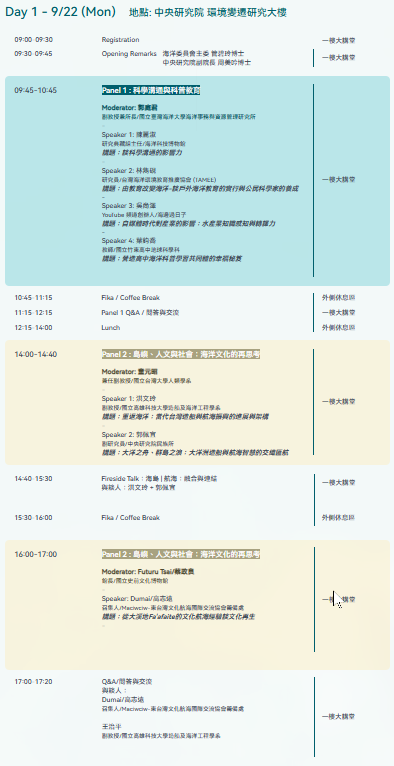
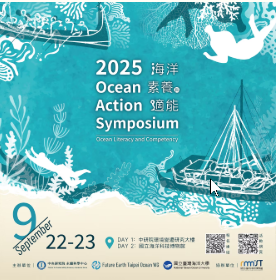
Evidence:
https://www.oceanactionsymposium2025.com/
4. Environmental Education Series: Sustainable Oceans & Circular Resources
「永續海洋-循環資源」系列環境教育活動
Sustainable use of marine resources has become a global consensus. Through marine environmental education, we convey concepts and hands-on practices in biological resource restoration, the circular economy, water safety, and the hazards of microplastics. Centered on the ethos of "clean the sea, understand the sea, get close to the sea, and enter the sea," our marine science outreach—combined with activities such as stock-enhancement releases and seed-stock cultivation—advances marine environmental policies and the goals of resource circularity. We completed 43 marine education sessions with a total of 3,156 participant attendances. Program content spanned coral introduction and conservation, coral planting and restoration, algae literacy, stock releases to coastal waters, microplastic hazards, fish and seaweed food education, coastal cleanups, geological field surveys, and on-water experiential activities.
Sustainable Impact:This initiative, centered on "Clean the Sea, Know the Sea, Approach the Sea, Enter the Sea," integrates ecological restoration, coral conservation, and microplastic awareness through experiential learning. It fulfills SDG 13.3.1 by promoting climate and environmental education, and SDG 13.3.5 through partnerships with NGOs on climate-related outreach. Activities such as coral propagation, marine species release, and pollution awareness align with SDG 14.2.2, 14.2.3, 14.3.1, and 14.3.3, which emphasize ecosystem restoration and pollution reduction. Additionally, coastal cleanups and coral planting support SDG 14.5.2 on marine conservation. The 43 public courses and hands-on experiences also correspond to SDG 4.3.4, representing off-campus educational outreach that enhances ocean literacy and encourages sustainable community engagement.
海洋資源永續利用已成為國際共識,透過海洋環境教育傳遞生物資源復育、循環經濟、水域安全及微塑膠危害之觀念與實際體驗,以「淨海、知海、近海、進海」為核心進行海洋科普教育,並搭配生物放流與種苗培植等活動,可落實海洋環保政策之推動與資源循環利用之目標,完成43場次之海洋教育課程,共計3156人次,活動內容涵蓋珊瑚介紹及保育、珊瑚種植復育、藻類知識科普、海域放流、微塑膠危害、食藻教育、海岸淨灘、地質踏查、食魚文化、水上體驗等一系列活動。
永續影響力:此活動以「淨海、知海、近海、進海」為主軸,結合生物復育、珊瑚保育與微塑膠防治等教育體驗,屬於SDG 13.3.1的氣候教育推廣及13.3.5與NGO合作推動氣候行動之實踐。同時透過海洋資源復育與生物放流,符合SDG 14.2.2、14.2.3及14.3.1、14.3.3對保護與復育海洋生態系及減少海洋污染的目標;再者,海岸淨灘與珊瑚種植亦落實SDG 14.5.2之海洋保護行動。而多場公眾課程與體驗教育則對應SDG 4.3.4之校外教育外展,推動全民海洋素養與永續行動。
「海洋生物培育館」推動海藻育種與保育
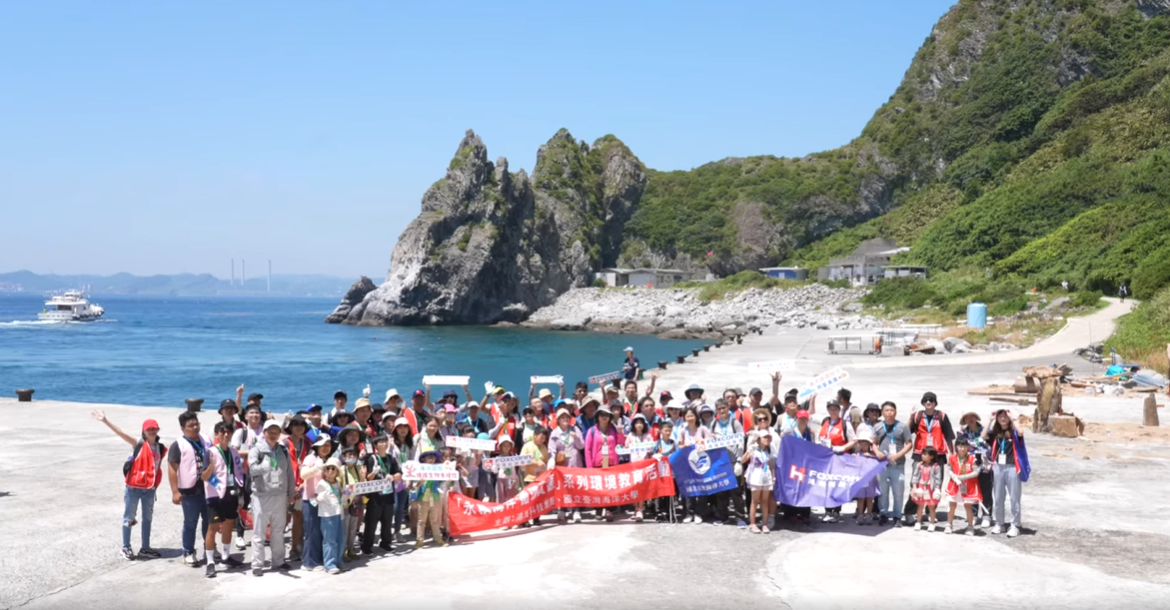
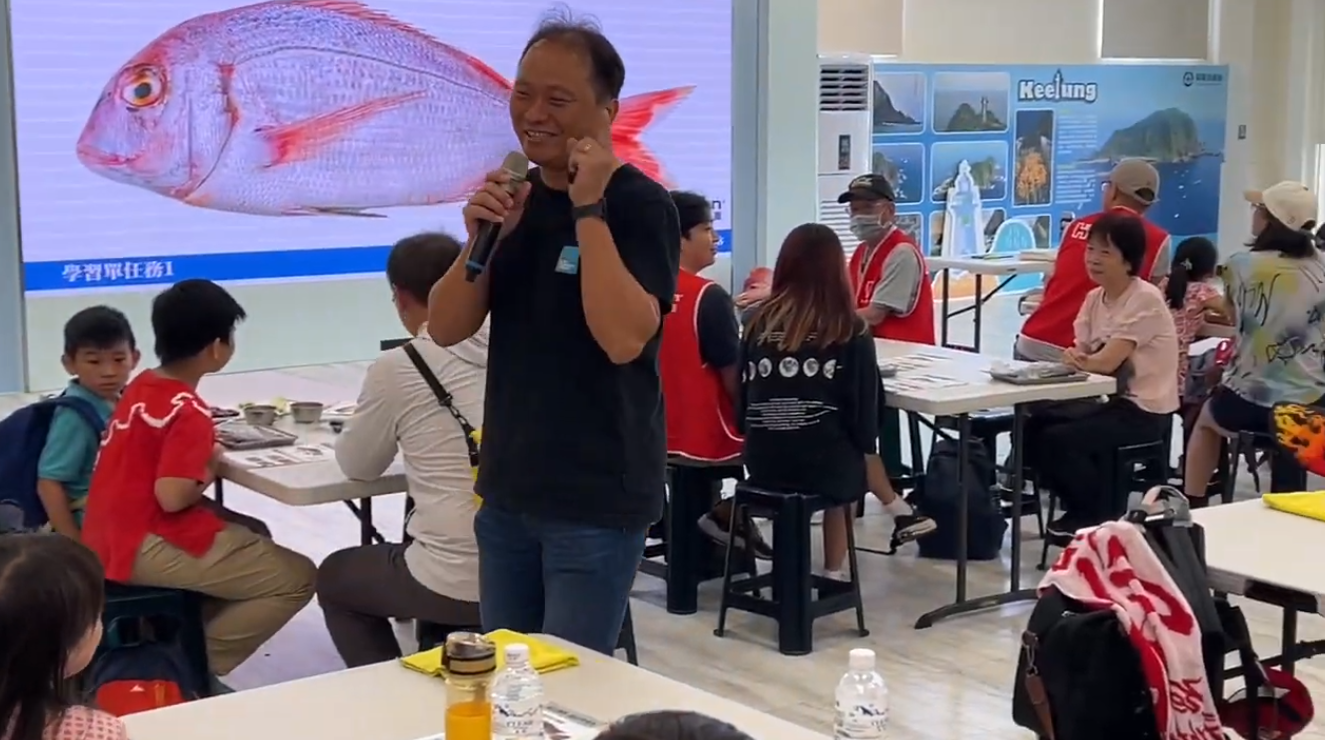
Evidence:
https://www.facebook.com/watch/?v=1781814792357038
https://www.facebook.com/watch/?v=465669422909823
https://www.youtube.com/watch?v=cZoxPo4zIw8
https://www.youtube.com/watch?v=0LIpe_Lx1Zo
https://www.youtube.com/watch?v=POkOR121aWc
5. Effects of dnd1 mutation on primordial germ cell migration and sex determination in freshwater angelfish, and the consequent impacts of germ-cell deficiency on fatty-acid and energy metabolism.
探討淡水神仙魚 dnd1 基因突變對原始生殖細胞遷移、性別決定脊因此缺乏生殖細胞對脂肪酸與能量代謝改變之影響
We investigate how dnd1 mutation shapes development and metabolism in freshwater angelfish. Using CRISPR-induced alleles, we tracked primordial germ cell migration, quantified gonadal differentiation, and profiled hepatic and muscular lipid metabolism. dnd1 mutants lacked germ cells, showed disrupted PGC guidance, and skewed sex determination toward sterile, masculinized phenotypes. Transcriptomics and qPCR revealed downregulation of lipogenesis genes and enhanced beta-oxidation pathways, consistent with reduced total fatty acids and altered SFA/MUFA/PUFA ratios. Infection and fasting challenges indicated limited energetic flexibility. Our results link germ-line deficiency to systemic metabolic reprogramming, highlighting crosstalk among reproduction, immunity, and energy balance, and informing selective breeding strategies.
Sustainable Impact: This study investigates how dnd1 mutations reshape the development and metabolism of freshwater angelfish using CRISPR-induced alleles, tracking germ cell migration, gonadal differentiation, and lipid metabolism. The research aligns with several SDG14 sub-targets.
It directly contributes to SDG14.3.1 and 14.3.3, which emphasize research and monitoring activities that assess and understand the health and functioning of aquatic ecosystems. By revealing how genetic disruptions in reproductive systems lead to metabolic reprogramming and reduced energy resilience, the study provides insights relevant to maintaining aquatic biodiversity and biological balance.
Furthermore, the findings resonate with SDG14.4.1 and 14.4.2, which call for effective water quality standards and actionable plans to reduce pollutants. The metabolic implications of germline deficiency illustrate how biological stress can alter ecological health indicators, thereby informing pollution prevention and sustainable aquaculture practices.
Finally, the project supports SDG14.5.2, which stresses the importance of monitoring the health of aquatic ecosystems. The integration of molecular, physiological, and environmental data provides a model for long-term monitoring of fish populations and ecosystem resilience. Overall, this research bridges molecular biology and sustainability science, contributing to the protection and sustainable use of aquatic life.
本研究探討 dnd1 突變如何形塑淡水神仙魚的發育與代謝。以 CRISPR 誘導等位基因,追蹤原始生殖細胞(PGC)遷移、量化性腺分化,並分析肝臟與肌肉的脂質代謝。dnd1 突變體缺乏生殖細胞,PGC 導引受擾,性別決定偏向不育的雄性化表型。轉錄體與 qPCR 顯示脂質生成路徑下調、β-氧化上升,與總脂肪酸降低及 SFA/MUFA/PUFA 比例改變相一致。感染與飢餓挑戰顯示其能量彈性受限。結果連結生殖系缺陷與全身代謝重組,突顯生殖、免疫與能量平衡之間的交互作用,並為選育策略提供參考。
永續影響力:本研究透過基因編輯與代謝分析,探討 dnd1 突變對淡水魚生殖與代謝的影響,對應至 SDG14 的多項細項。研究涉及水生生物生殖與能量代謝機制,符合 14.3.1 與 14.3.3 強調的「保護和可持續利用海洋,維護生態系統及其生物多
樣性」精神;同時藉由分析代謝異常對環境與生理穩定的影響,呼應 14.4.1 與 14.4.2 關於「水質保育與減少塑膠垃圾」。整體而言,本研究促進水生生態健康與可持續管理之知識累積,並符合 14.5.2 強調的「監測水生生態系統健康」目標。
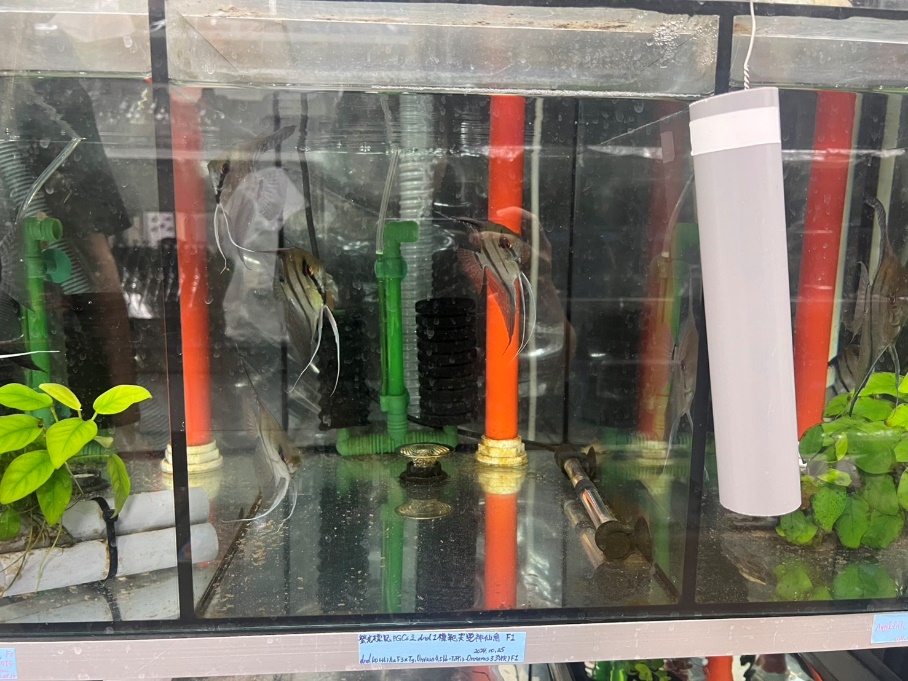
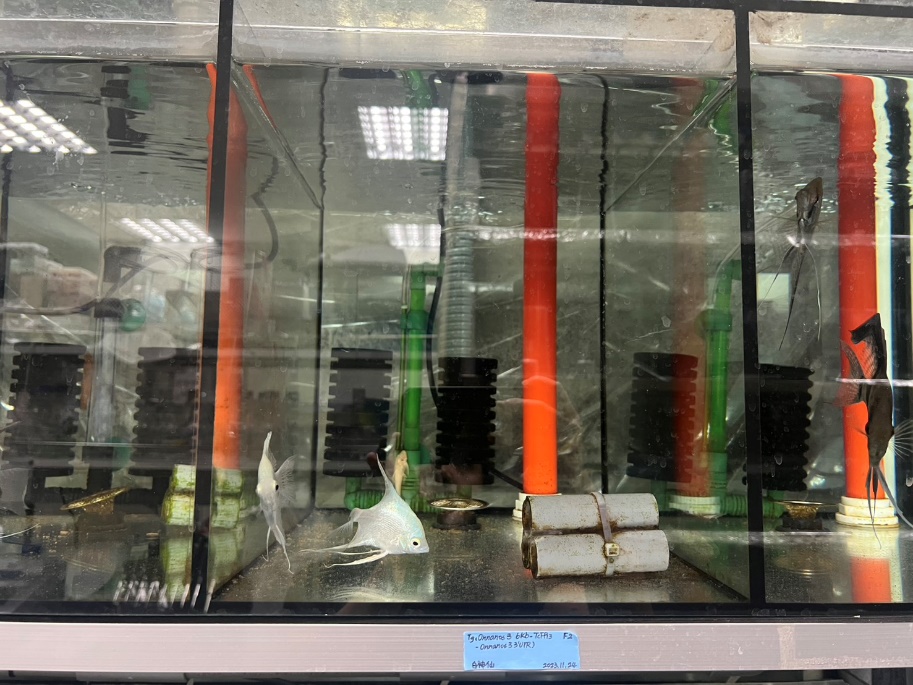
Evidence:
6. Energy-Balanced for Multi-Source Cooperative Privacy Protection Protocol for Underwater Sensing Networks.
適用於水下感測網路的節能多來源節點合作隱私保護協定
In the silent depths of the ocean, countless sensors flicker like stars beneath the waves. These small devices form what is known as the Underwater Wireless Sensor Network (UWSN)—a system designed to monitor marine environments, detect pollution, explore underwater energy sources, and even prevent tsunamis. Yet, building this network was far from easy. Unlike terrestrial Wireless Sensor Networks (WSNs) that rely on electromagnetic waves, underwater communication depends on acoustic signals, which suffer from limited bandwidth, high latency, and significant energy consumption. For instance, in the WHOI Micro-Modem, the energy required to transmit a signal is 125 times greater than that needed to receive it. Without careful design, the network could quickly deplete its energy reserves and fail. The Dual Challenge: Privacy and Power Beyond energy, another hidden risk looms—Source Location Privacy (SLP). Imagine a protected marine habitat where sensors track the movements of dolphins or sea turtles. If a poacher intercepts data packets and traces their transmission path backward, they could locate these animals' exact positions. This is known as the “Panda-Hunter Problem.” To counter such attacks, existing methods generally fall into two categories: 1. Extending the data forwarding path to increase the time required for attackers to trace it back. 2. Creating fake paths, where decoy packets are sent to mislead attackers. However, both strategies come at a cost—longer delays and higher energy consumption. In the underwater environment, where every joule counts, such costs can drastically shorten network lifetime. The Birth of EBMC To overcome these limitations, the research team proposed a new protocol—the Energy-Balanced Multi-Source Cooperative Source Location Privacy Protection Protocol (EBMC). EBMC aims to make the network “intelligent and cooperative.” It dynamically considers each node's residual energy and data load, assigning more forwarding tasks to nodes with higher remaining energy and lighter data flow. This balance prevents energy holes—a situation where nodes near the data sink drain their batteries too quickly, cutting off communication from outer nodes. Furthermore, EBMC introduces multi-source cooperation. Instead of building separate transmission routes, multiple source nodes collaboratively construct cooperative fake paths, increasing the safety time and confusing attackers more effectively. Results and Achievements The simulation results were remarkable. Compared with traditional Random Walk (RW) and FPCC-based protocols, EBMC improved network lifetime by up to 442.1% and safety time by 42.6%. This means EBMC not only extends how long the network operates but also strengthens its resilience against attacks—a crucial step toward a smarter, more sustainable underwater sensing ecosystem. Future Vision While EBMC has demonstrated strong performance, the research continues. Future work will focus on developing more sophisticated attack models, simulating adversaries with advanced localization capabilities and adaptive tracking strategies. The team also envisions combining EBMC with machine learning, enabling the network to self-learn and dynamically adjust its transmission behavior in real time. In the stillness of the ocean, these sensors are more than technological instruments—they are silent guardians of our planet's blue frontier. And EBMC is the beating heart that keeps them alive, secure, and vigilant for years to come.
Sustainable Impact: This research introduces an Energy-Balanced Multi-Source Cooperative Source Location Privacy Protection Protocol (EBMC) for Underwater Wireless Sensor Networks (UWSNs), designed to enhance the sustainability and security of deep-sea environmental monitoring. The EBMC protocol improves energy efficiency while safeguarding source location privacy, thereby prolonging network lifespan and ensuring reliable ocean data collection.
By advancing intelligent and energy-efficient underwater communication systems, this study supports long-term marine ecosystem observation, resource management, and disaster prevention. It contributes directly to SDG 14.5.2 — promoting research and educational activities that support sustainable ocean ecosystem management, exemplifying the university’s role in integrating marine technology innovation with environmental conservation for a smarter and more sustainable ocean future.
在遙遠的深海中,靜謐的藍色世界裡,無數感測器像星辰般閃爍。這些小小的裝置組成了「水下無線感測網路(Underwater Wireless Sensor Networks, UWSNs)」,它們肩負著監測海洋環境、探勘能源、預防災害的使命。 然而,這個網路的誕生並不平靜。研究人員很快發現,與陸地上的無線感測網路(WSNs)不同,水下的世界有其獨特的挑戰——電磁波無法有效傳輸,聲波成了唯一的溝通方式,但聲波傳輸有頻寬狹窄、延遲高、耗能大的缺陷。尤其在資料封包傳輸過程中,傳送所消耗的能量竟是接收的125倍,這意味著,若不妥善設計通訊策略,整個網路很快就會耗盡能量而癱瘓。 問題的起點:隱私與能量的兩難 除了能量問題外,另一個潛藏的威脅是「來源節點位置隱私(Source Location Privacy, SLP)」。 想像一下,在一片珍稀海洋生物棲息地中,研究人員佈署了感測器網路來追蹤海豚或海龜的行蹤;但若有非法獵人能透過監聽封包方向,沿著資料傳回的路徑追蹤至來源節點,那麼這些珍貴生物的安全便會受到威脅。這就是所謂的「Panda-Hunter Problem」。 為了防止攻擊者追蹤,過去的研究提出了兩種主流策略: 一是延長資料回傳的路徑,讓攻擊者需要更多時間回溯來源; 二是建立「假路徑」,由節點發送偽造封包以誤導追蹤。 然而,這兩種方法都付出了高昂的代價——前者增加延遲,後者耗費能量。尤其在水下這種高功耗的環境中,這樣的代價往往讓整個網路壽命大幅縮短。 研究的誕生:EBMC協定的構想 於是,研究團隊提出了一個新的構想——具節能演算法之多來源節點合作隱私保護協定(Energy-Balanced Multi-Source Cooperative Source Location Privacy Protection Protocol, EBMC)。 這個協定的核心理念,是讓網路「聰明地分工」。 EBMC考慮每個節點的剩餘電量與資料傳輸量,讓電力較充足、流量較低的節點多負擔資料轉送,避免靠近資料收集節點的「內層節點」過度消耗電力形成「能量空洞」。如此一來,整體電量能平均分配,延長了網路的壽命。 更進一步地,EBMC引入「多來源節點合作」的概念。以往的協定通常讓每個來源節點獨立建立傳輸路徑,但EBMC讓多個來源節點共同建立「共構假路徑」,藉此提升安全時間,讓攻擊者更難辨識真正的來源節點。 研究成果:智慧平衡的力量 模擬結果令人振奮。與傳統使用隨機遊走(Random Walk, RW)與FPCC協定的系統相比,EBMC在「網路運作時間」上提升了最高442.1%,在「安全時間」上提升了42.6%。 換言之,EBMC不僅讓感測網路能活得更久,也讓它更安全。這個協定同時解決了能量分配與隱私保護的雙重挑戰,是水下感測技術向智慧化邁進的重要一步。 未來展望:邁向更智慧的海洋世界 雖然EBMC已展現卓越成果,但研究團隊並未止步。未來,他們計畫設計更先進的攻擊模型,模擬攻擊者具備更精確定位設備或更複雜策略的情境,以驗證協定在極端條件下的穩健性。 此外,團隊也希望將EBMC與機器學習結合,讓網路能自動學習攻擊模式,動態調整節點的傳輸策略,最終打造一個能自我防禦、長期運作的智慧水下網路。 在深海的寂靜中,這些微小的感測器不只是冰冷的科技產物,而是守護海洋與地球生態的無聲衛士。而EBMC,正是讓這些衛士能更長久、智慧地執行任務的心臟。
永續影響力:本研究針對水下無線感測網路(Underwater Wireless Sensor Networks, UWSNs)提出具節能演算法之多來源節點合作隱私保護協定(EBMC),用於深海環境監測與生態保育。此技術能在降低能耗的同時,保護來源節點位置隱私,確保感測資料的長期穩定傳輸,並提升生態監測之安全性與持續性。研究成果有助於推動海洋感測科技的智慧化與永續化,為深海環境監測、海洋資源管理及災害預防提供科學支撐。該研究實質貢獻於 SDG 14.5.2(支持海洋生態系統永續管理的研究與教育活動),展現大學在推動智慧海洋監測與藍色永續創新領域的研究實力。


Evidence: